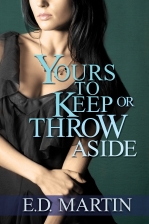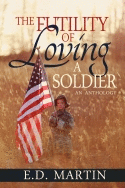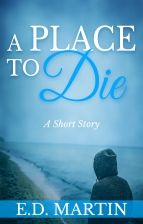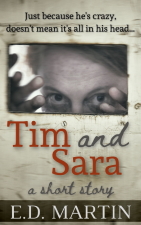Elliot Anderson, a member of a writing site to which I belong, had some great tips today for writing short stories (although in my opinion they can easily be applied to any storytelling). With his permission, I’m reposting them here:
Showing vs Telling
Despite the fact that this is repeated over and over in the community. People seem to forget this in every story I READ. I swear, if I had a penny for everytime somebody pretended they understood this rule, yet never incorporated it into their writing…. This is really the #1 thing you can do to improve your writing. Lots of things fall into place if you understand this simple rule.
Draft 1: Telling
It was Christmas Eve, and it was windy in the city that night. She stood on the street corner alone. She was beautiful and wealthy, with sharp features and brown hair. 11 months ago she had married her boyfriend from college, Tom. She was off the market, and happy. Sort of. His parents, whom she loathed, were hours late to pick her up from Grand Central. She pulled out her phone to call them but slipped on a piece of ice. She sat there, crying. But a car drove past and a man got out. And that’s when she saw him: brown hair, brown eyes, tan, with a jawline that could cut scene progress. He asked her if she was okay and helped her stand up but she had broken her high heel and she slipped again and fell awkwardly onto him as he kneeled to pick up her broken phone. She apologized profusely and wanted to think of a way to ask him for a ride, but she knew that was ridiculous and unwifelike and so she remained silent. He then offered her a car ride in a bold manner and knowing that her husband always caved when he would say something bold and she would pretend she had not heard. So she pretended like she had not heard this man’s offer. She felt that was a fair way to go about things. He didn’t cave at all, in fact he flourished, unlike her wimpy husband. She laughed. And he led her back to his car.
Wow, my god. Boring. Unfortunately most people think that this can pass as “ficton/literature/writing”. Let’s find an excuse to show this stuff via imagery, sensory descriptions, action, subtext, dialogue-subtext, or suggestive dialogue, or flat out dialogue. My last resort is generally to be the narrator telling information. Too many writers take the easy way out, it’s very easy to just tell information, it’s much harder to show it seductively, subtlely.
Draft 2: Showing
She stood alone on the corner of 42nd and Madison, clutching her sable fur chiffon around her shoulders in one hand, and in the other her thumb stroked the band of her wedding ring: twisting the glistening diamond back and forth in the clouded moonlight. A taxi cab sloshed up to the curb beside her, and the window came down.
“Taxi?” The man asked with a smile, looking her up, down; and back up again.
“Oh, I’m waiting for someone,” she said with a wave of her hand. “Thanks though.” She gave a quick, polite smile as the canyonous winter citywind picked up again, chilling her teeth.
“Well, Merry Christmas.” The cab driver said.
She nodded.
He leaned back into the driver-seat. The window went back up, and he sped off.
“We’ll see.” She mouthed with a roll of her eyes, pulling her brown hair out from between her lips. She turned away from the wind and the street to make yet another phone call, and as she did, her heel caught an edge of black-ice and she fell backwards: wincing as her ass and then palms hit the ground, straining her wrist. She sat there in the moon: a long tear fell from her eye, which she wiped away, and in her other eye she blinked her tears back.
A car passed on the opposite side of the road, slowing down in a blur of red brake-light. A man got out, and stepped into a light jog across the slushtracked streets. “You alright?” He called out to her.
“I’m fine.” She replied as she got up. And then she saw him, and sat back down again. She sniffled with a bite of her lip and shook her head with a smile: “Oh, no, I’m fine. Really.”
He put his hands out. She took them, and he brought her to her feet. He let go of her cold fingers to kneel and pick up her phone.
She had not noticed her broken heel and stumbled backwards again, grabbing his brown hair, and then his shoulder for balance.
“Wow,” he laughed.
She let go of his shoulder, and stood on one foot. Balanced. “Oh. My god,” she said clutching her hands to her chest with nervous laughter: “I am so sorry.”
He stood up and handed her the phone; it was broken. He smelled like car exhaust and espresso. She wanted to say anything, but he looked through her and said: “Does my lady need a ride tonight?”
And she heard him, but she tested him with a fake curl of the lip: “Um, come again, Sir?”
And he said: “Absolutely.” And he knelt down in front of her again.
She put her hands down, still clutching her strained wrist which held her shattered phone.
“What?…are you doing.”
“Oh, well the ‘Sir’ thing.” He smiled with his faded brown eyes. “I was hoping Her majesty would knight me.”
She burst out laughing and made a face: “What?”
“Nevermind. ” he said, standing up. “Hey you still need that ride? Let’s go, it’s gotta be cold out here for a bird like you.” And he put his arm inside the fur cloak and under her arm for her support and led her to the warmth of the car.
Alright so let’s talk about what we didn’t say. Since often that is more powerful. We didn’t mention Tom’s name because we couldn’t find an excuse to do so in this scene. We didn’t mention their marriage of 11 months because again we couldn’t find an excuse and the twisting of the ring suggest it is rather new, but her bitterness suggests that the honeymoon has worn off, and the twisting of it suggests that she may be ready to psychologically take it off or that it is a bit uncomfortable We used a very forgettable taxi driver to illustrate that it was either Christmas Eve or Christmas, that she is waiting for someone, that she is bitter about waiting, and that she is bitter perhaps about whoever is coming to pick her up. We never mention the in laws, we’ll have more than enough opportunity to show their character flaws that she hates and how she reacts to them. We present our secondary character immediately and begin the real plot nearly immediately. We don’t act like he is a statue or a portrait. We let dialogue, subtext, and some subtle description paint a very clear picture of who he is as a person. It helps that he is charming and not boring. Boring people are difficult to describe by showing (very easy to describe by telling). One could actually argue that we made him -too good- i.e. he is unbelievable and it’s pretty obvious that she is into him already. But at least we didn’t do what we did in Draft 1 which was give EVERYTHING AWAY…
In the 2nd draft, the only thing we told in this entire scene was that she was standing alone. You could argue we said that a cab pulled up next to her, but we didn’t say it pulled up next to her, we said it sloshed up next to her, which is imagery and evokes the sound of a wet road. Everything else was shown. Notice how it takes alot more space on paper to show than to tell.
On Ruining Drama/Conflict/Suspense…
Another thing that should be mentioned. When you get into telling, the reader gets spoiled. They feel like they are entitled to all this information, and then you end up giving away things that ruin suspense and drama. In this case in the first draft, we give away her relationship with Tom in word for word detail which is something that we could have spent 100 pages exploring fully had we not outright said it. We then give away the current suspense-thread which is who is picking her up, and how she feels about them. In Draft 1 we give away the fact that shes basically psychologically over her husband and has found a new suitor. In Draft 2 none of this is explicitly stated and isn’t even really obvious implicitly, but in some deep sense the reader knows that there is drama ahead and it is juicy.
3-D Characters
Another thing I’ve noticed is that I think authors are scared to make their characters look bad or take the wrong shape, form, color, personality, etc in the reader’s head, so they get into this habit of telling them things. In this scene we definitely risked making this girl look like a bit of a bitch. We will have to remedy that, if she is going to be our hero and we don’t want her to be a bitch, then we need to find a way to show her being graceful and kind before we see her in a bad mood again. But what we don’t do is pander and tell and give everything away and insist on handing out a cardboard cutout of the character with their traits and backstory listed on the back. So that you and I and the readers all have the exact same image of the character. We let the characters breathe, and we let them possibly look “wrong” in the readers eye, and we let them possibly lose some “respect” in the readers eye. But we do our best within the confines of advancing the story @ pace. Characters need to exist primarily in your head with random notes on paper. Not the other way around. I.E. if we put a note for “ruthless” under “Scarface” and created “Scarface” to be completely ruthless, then he would have been all about killing women and children. And yet he is completely ruthless, but he is also realistic. He isn’t a fucking notecard that gives orders to your characters. I feel like some writers do this, they list characteristics and refuse to let their characters operate outside of these bounds. This is a great way to make your characters really predictable, if that is what you are going for.
Style & Voice
Another thing that becomes apparent in draft 2 is that we are starting to develop style and voice. Your unique and individual style and voice come through much more clearly when you show things. When you tell them, you sound like everyone else who -thinks- they can write.
Creativity & Intuition
Showing lets you get creative, but requires you to be a good problem solver as well. You have to figure out how to show things without being too showy and obvious and boring about it. You get opportunities to show, smell, taste, hear. And you get to start being subtle and sly, which is the work of the right brain. The reader enjoys this. The reader loves to have to intuitively decipher things: that is imagination, that is good. Don’t be afraid to be vague about things if you are writing for adults let them pick up on the small things, don’t outright tell them what they can “guess”. In the end plot answers most questions, and a good edit will show you what you need to fix. Almost everything can go unanswered, really. Also, showing makes the world more alive, lets you bring in characters to affect your hero and lets your characters become alive through the events they encounter and the places they go. We aren’t just told they reacted and felt X, we get to see what they did and why.
Thematic Elements
Last but not least, what is evident in draft 2 is that we are starting to see already in the first paragraph: possible themeatic elements. Possible symbols include the moon, the diamond ring, the streets, the city, or even the color brown (associated with him). I.E. if we want to invoke in the reader the sum of her frustrations and her readiness to perhaps end her marriage….again we can simply show her twisting the ring. But again the point is to be subtle and not overdo it or make it obvious. If we want to invoke the feeling of her being alone, we can use the moon. We created a man for whom she might leave her husband and who will change her life for the better: by having him come down the other side of the road, park, cross the street and ask her if she’d like a ride. We’ll find a way to show that he is observant and has a good memory and is always on time later to reinforce his superiority. This signifies her unfulfilled desire(the road which is what she is staring longingly at/a car/ride) and an oppositition(coming the other way of the taxi) to what she has come to expect, (carelessness, coldness, tardiness and forgetfulness). The point here is that when you start to show the reader these elements, you start to learn how you can subtly and carefully abuse them to get emotions out of your reader.
Now on another note completely, in short story you need to distinguish between plot and meta-plot. For instance if we are telling a story here about a girl meeting her husband at his parents house in Manhattan for Christmas, where she falls for another guy, after seeing in one weekend her husbands worst features and another man’s best features. We need to talk about meta-plot, i.e. how can we abuse the time of year, the setting, etc. so as to not only let this happen but to symbolize it as well. For instance we can symbolize the guy she is going to fall for as her true Christmas present. I.E.
“She pictured how she would undress him in her mind: she’d untie his scarf, peel off his jacket and shirt, throw them on the ground in a crumpled pile and she’d run her fingers over his skin, skin she had never felt before.”
and later on….We can symbolize the failures of her husband with negative Christmas imagery I.E. She’ll ask her husband to make a fire, and he’ll struggle to even open the chimney flue, and he’ll be covered in coal and soot after the debacle, only to get mad at her for not helping. To contrast this, we can emphasize the “warm” and maybe even “fire”like features/personality of the man she will end up falling for.
The point is that we chose Christmas because it is one of those times when women expect men to come through in certain ways, and it provides a perfect opportunity for her to cheat on him because this is the city, rather than back home where everyone seems to know each other. In addition, the imagery is rich and we can easily abuse it, we just have to stay subtle.
In other words, what is going on in the world/plot should be reflective or run contrary to what what is going on in your characters mind/life. And what is going on in their mind should be reflective of what you believe to be the meaning/moral/non-moral/point of the story. There is no excuse to have a random or seemingly unrelated unsymbolical unreflective pointless setting or plot to your short story.
Premise
So if our plot is something like “A woman meets husband (Tom) at his parents home in Manhattan for Christmas, but falls for another man(Dawes) after seeing Tom at his absolute worst, and Dawes at his absolute best.” But what is the point? The drama and conflict is good and all. But if the point is not to get a laugh from the reader, i.e. we are not writing comedy, then we need to have a point that is unspoken but is driven home. Not only is it important that we remain true to proving this premise(and thus keeping our plot directed and know when the story is over) but it is important that we remain loyal to this premise (again to keep our plot directed and to prevent confusion within the reader). For instance we could write a premise for this plot of “adultery is bad” since we haven’t written the end yet, it is possible that we could make that premise work, but it would be weak. A better premise would be something like “sometimes you need to break the rules to remember why you made them” i.e. “sometimes you need to find love outside of your marriage to remember why you fell in love in the first place” or maybe even “marriage cannot prevent true love” (if we want her to truly fall in love with this new guy). Another premise we could work with is “it is a man’s duty to keep his wife interested in him”. How about this premise: “old love is more powerful than new love” (we could make the new guy and her have a bit of history together). I could go on and on and on. Alright I’m bored, but the point is. Once you have organized, told and proven your story according to this point/premise, then you need to wrap it up and your story is done. You need to be consistent here. If you backstab yourself by abandoning your premise halfway through, the story will never reach its potential. Blah blah. I read far too many stories on this site without any actual point to them other than “I had a cool climax scene in mind and wanted to write!!!!”
***********
Me again. What are your thoughts on Elliot’s writing tips? Agree or disagree? Do you write as he suggests, or do you have other methods and insights that work better for you?










